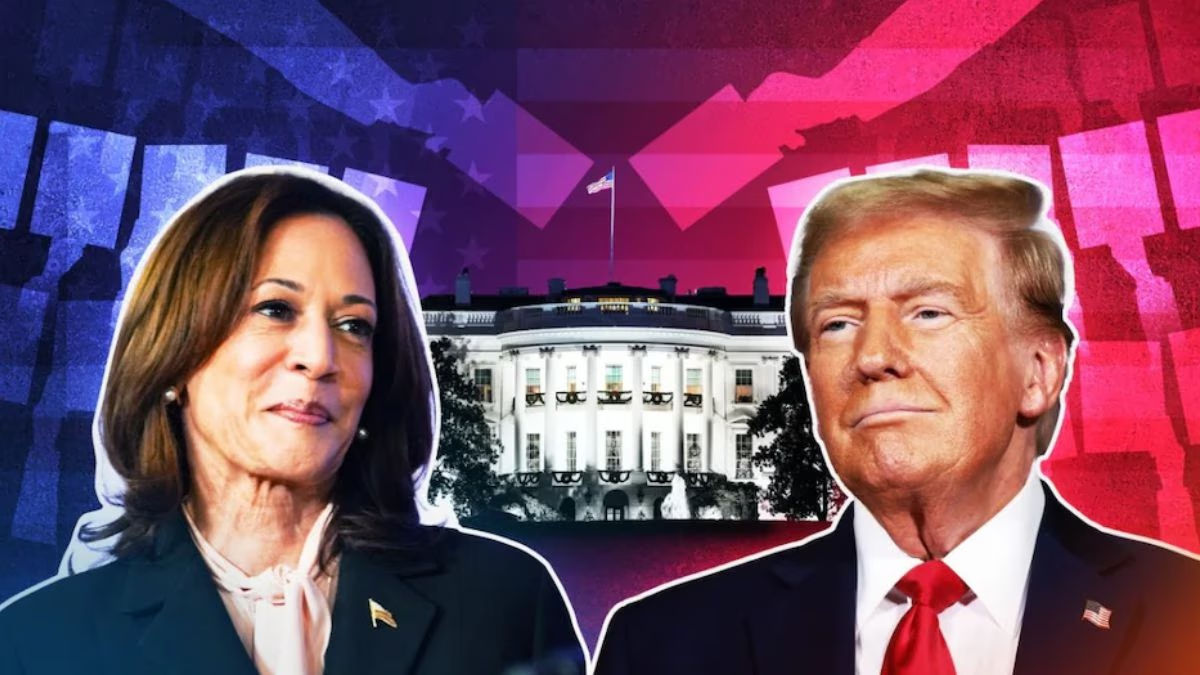The presidential elections in the US are currently underway. Kamala Harris represents the Democratic Party, while Donald Trump stands for the Republicans. Results may take a few days after voting begins on November 5. Though elections conclude earlier, the victorious candidate assumes charge only in January 2025. The new president takes the oath of office in January 2025.
The election process in America is somewhat complex. Even if a candidate emerges victorious in the current elections, it doesn't necessarily mean they'll become the next president. To secure the presidency, capturing a majority in the Electoral College is essential.
Let's Explore the Electoral College...
This is the most complex stage of the US presidential election. The Electoral College is essentially the body that elects the president. In simpler terms, the general public votes for individuals who form the Electoral College, which then selects the country's president and vice president. Voting occurs for these electors on the first Tuesday of November. These electors gather in their respective states on December 17 to cast votes for the president and vice president.
Therefore, while the American public votes today, they aren't directly selecting presidential candidates. The same principle applies to the vice-presidency.
How Does the Electoral College Work?
The Electoral College comprises 538 electors representing all 50 states and the District of Columbia. Each state has between three and 54 electoral votes. The number of electors from each state combines the total of their US Senators and Representatives.
How Is the President Determined?
The election for the president of the United States is an indirect process where citizens from each state vote for certain members of the Electoral College. These members, known as electors, cast direct votes, which are called electoral votes. A candidate who gains a majority of these votes is chosen as president and vice president.
Read More:

Source: aajtak
Winning 270 Votes Doesn't Secure Presidency
The winner of the 538-seat race is the one who secures 270 or more seats, but this doesn't automatically guarantee the presidency. It's possible for a candidate to win the most votes nationwide while failing to clinch the Electoral College victory, as seen in 2016 when Hillary Clinton lost despite winning the popular vote.
When Does the President Take Oath?
The president is officially sworn in during a ceremony held in Washington, D.C., in January. The inauguration of the president and vice president is scheduled for January 20, 2025.
America Divided into Three Colors
It's notable that colors hold significant meaning in American politics. Of the two major political parties, the
Democratic Party is represented by the color blue
while the
Republican Party is showcased in red
. However, purple also plays a role. The 50 states are divided into three colors: Red States, Blue States, and Purple States.
As the names suggest, Red States are those where the Republican Party has traditionally triumphed since 1980. The Republicans' flag is red, and Trump is often seen wearing a red hat in public.
Meanwhile, Blue States are those dominated by Democrats, where Democratic candidates have consistently won since 1992. The third category is Purple States, also known as Swing States.
What Makes Purple or Swing States Different?
Swing States are regions where neither the Republican nor the Democratic Party has predominance. Election results here are always unpredictable. The competition between party candidates is fierce, making it difficult to predict who will emerge victorious. These states often determine the outcome of reaching the White House.
During the final phase of campaigning, party candidates focus their efforts on these states. The term Purple State comes from blending red and blue, suggesting either party could win here.
Electoral College Votes in Swing States
Pennsylvania - 19
Georgia - 16
North Carolina - 16
Michigan - 15
Arizona - 11
Wisconsin - 10
Nevada - 6
In Swing States: Who Leads, Harris or Trump?
Recent surveys reveal a neck-and-neck battle between Kamala Harris and Donald Trump across seven swing states. Trump holds a slight edge in Pennsylvania, Georgia, and Arizona, whereas Harris seems to lead in Michigan, Wisconsin, and Nevada. The contest remains intensely competitive.




